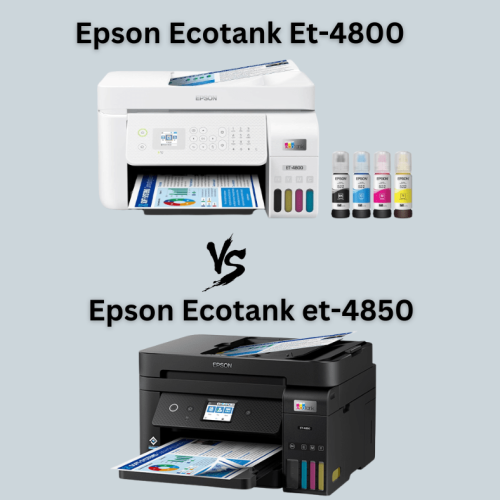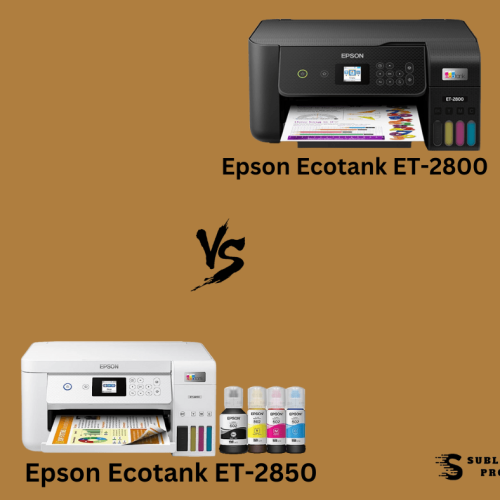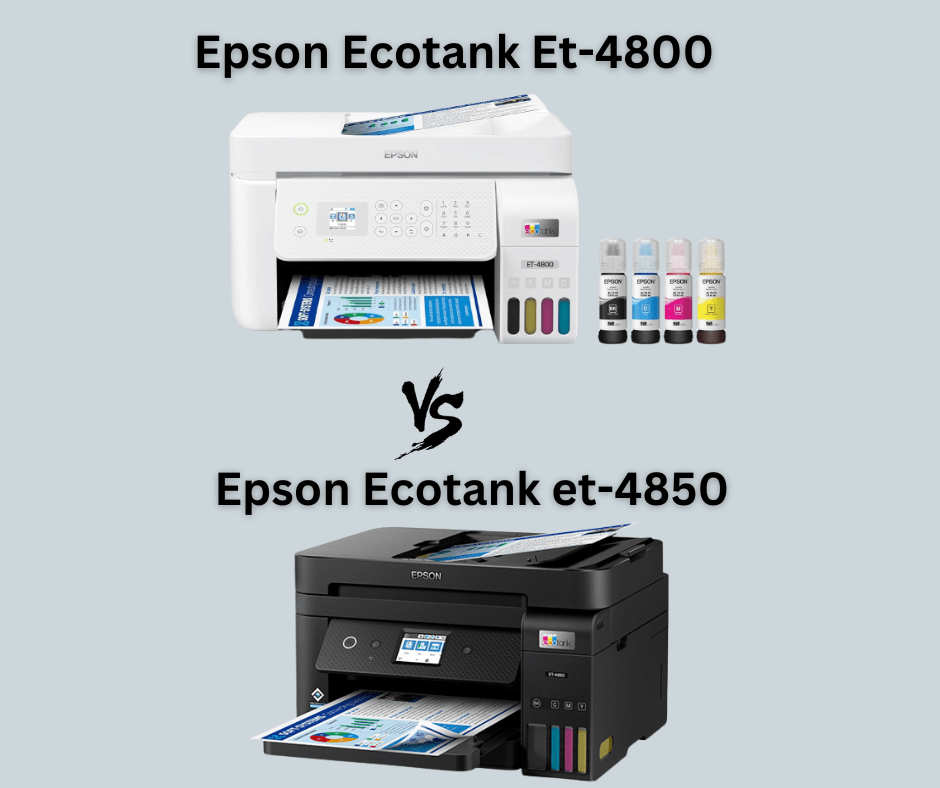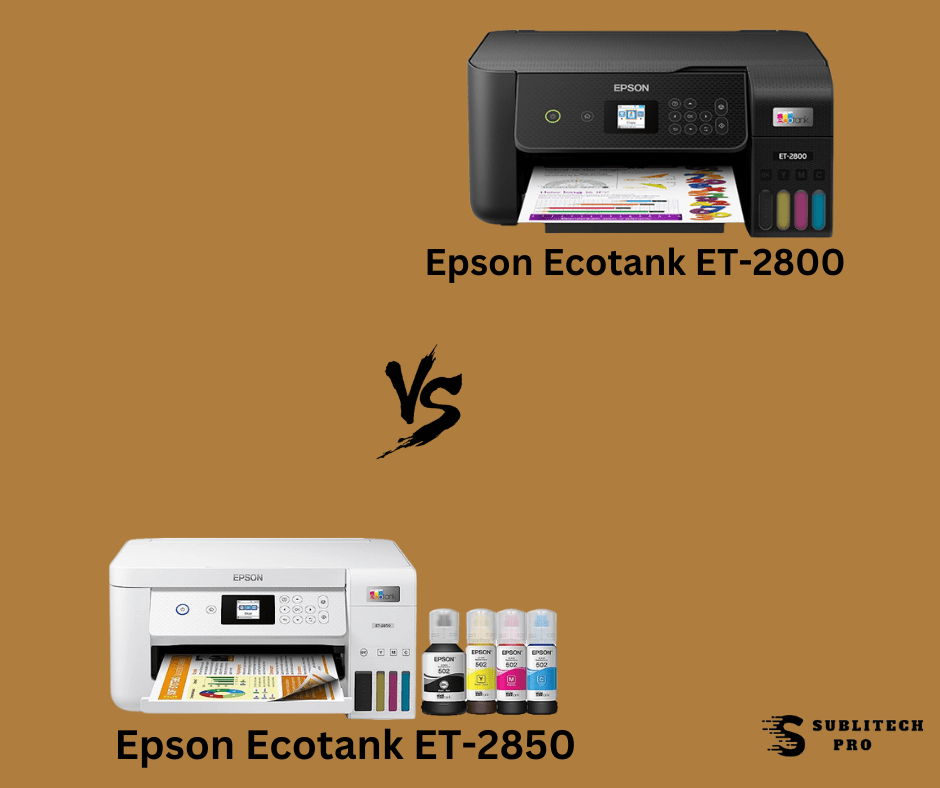
Sublimation printing, a captivating and innovative technique, has revolutionized the world of customized products, offering vibrant and durable designs that span across various materials. This article explores sublimation printing and its techniques, advantages, and limitations, shedding light on what it is, and what it can do for you.
In a world where personalization is prized, sublimation printing emerges as a groundbreaking method to create stunning, lasting designs on an array of materials. Whether it’s clothing, mugs, or home decor, sublimation printing opens doors to creativity and individuality. To fully appreciate its significance, let’s begin with a fundamental question:
Table of Contents
ToggleWhat is Sublimation Printing?
At its core, sublimation printing is a unique technique that harnesses heat and pressure to transfer intricate designs from sublimation paper to materials, such as polyester, ceramic, or metal. Unlike conventional printing methods, sublimation ink undergoes a fascinating transformation – transitioning directly from a solid to a gas state when exposed to heat.
This process ensures that the ink becomes part of the material, resulting in prints that are not only captivating but also durable, and resistant to fading or cracking over time.
The Sublimation Process: From Ink to Imprint
The journey of a sublimation print commences with the creation of a design on sublimation paper, employing specialized sublimation ink. This ink holds the extraordinary ability to transform into a gas without the intermediary liquid state.
Upon the application of heat and pressure, the ink on the sublimation paper sublimates, permeating the material’s surface and bonding seamlessly, creating a captivating, permanent design.
Unraveling the Mechanism: How Does Sublimation Printing Work?
Sublimation’s magic lies in its ink. The sublimation ink, when heated, transforms directly from a solid to a gas, allowing it to infuse the material with vibrant, high-definition designs. The porous structure of polyester materials enables the gas to penetrate and embed within, ensuring longevity and vividness.
Sublimation Printing vs. Traditional Methods
In contrast to traditional printing techniques, such as screen printing or heat transfer, sublimation printing presents an array of distinct advantages. The remarkable ability to achieve intricate, full-color designs across the entirety of a product sets sublimation apart.
Furthermore, sublimation’s environmental footprint is notably smaller, as it consumes less water and necessitates reduced manual labor, making it an appealing choice for the eco-conscious.
The Advantages of Sublimation Printing
Vibrant and Detailed Designs
Sublimation printing transforms your creative visions into reality, enabling you to craft intricate, full-color designs that stretch across every inch of your chosen canvas. From subtle gradients to bold hues, sublimation captures every nuance, ensuring your designs radiate with life.
Durability Beyond Comparison
Unlike traditional prints that may fade or peel over time, sublimation printing ingrains the ink into the material, creating a lasting bond. This results in designs that withstand the test of time, maintaining their brilliance and integrity even after numerous washes or exposure to the elements.
Swift Turnaround Time
Traditional printing methods often involve elaborate setups and meticulous alignments. Sublimation, on the other hand, streamlines the process, reducing production time considerably. With the elimination of intermediary steps, your creations come to life swiftly, allowing you to bring your ideas to market faster.
Diverse Product Range
Sublimation’s versatility knows no bounds. From clothing and accessories to mugs and home decor, sublimation opens doors to an extensive array of products. Whether you’re adorning garments with intricate designs or creating personalized home accents, sublimation’s adaptability ensures your creativity knows no bounds.
Environmental Friendliness
Embracing sublimation doesn’t just empower your creativity – it also contributes to a greener planet. With its reduced water consumption and minimized need for manual labor, sublimation presents an eco-friendly alternative to traditional printing methods.
Navigating the Limitations of Sublimation Printing
Ink Expenses: Balancing Quality and Cost
While sublimation ink offers remarkable vibrancy and durability, it’s essential to consider the associated costs. Sublimation ink can be pricier compared to other options, prompting a delicate balance between achieving optimal quality and managing expenses.
Material Matters: Polyester’s Essential Role
Sublimation’s charm hinges on polyester’s affinity for the ink. This means that materials lacking in polyester content may not yield satisfactory results. To unlock the full potential of sublimation, opt for fabrics and surfaces that boast a high polyester composition.
Limitations on Dark Surfaces
Sublimation ink’s translucent nature poses a limitation – it struggles to make an impact on dark or black materials. The ink’s opacity is best showcased on light or white surfaces, ensuring your designs shine vividly.
Specialization and Equipment: A Prerequisite
Embarking on a sublimation journey demands specialized equipment, including sublimation printers, papers, and inks. While the results are undoubtedly captivating, it’s crucial to acknowledge that sublimation requires a dedicated approach.
The Sun’s Caress: UV Sensitivity and Color Fading
While sublimation prints are renowned for their resilience, exposure to direct sunlight can still pose a challenge. UV rays have the potential to impact the ink’s vibrancy over time, prompting careful consideration of the final placement of your sublimation-adorned creations.
Deciphering Sublimation vs. Heat Transfer: The Battle of Techniques

The Sublimation Approach
Sublimation’s hallmark lies in its ink, which metamorphoses into gas under heat, bonding with materials on a molecular level. This process ensures unparalleled vibrancy and durability, presenting a unique proposition for designers and manufacturers.
Heat Transfer: A Different Perspective
Heat transfer, another popular technique, employs regular ink printed on specialized paper, which is subsequently transferred to materials using heat and pressure. While effective, heat transfer lacks sublimation’s unique molecular bonding and may not offer the same longevity.
Key Differences Between Sublimation and Heat Transfer
Sublimation holds a distinct advantage in terms of vibrancy, durability, and molecular integration. Heat transfer, while suitable for specific applications, may not provide the same level of brilliance or long-lasting results.
The Diverse Pathways: Sublimation vs. Screen Printing
Sublimation: Where Heat Meets Art
Sublimation printing’s hallmark lies in its fusion of heat, pressure, and ink. The result is a mesmerizing design that becomes an intrinsic part of the material. From clothing to ceramics, sublimation’s versatility makes it a favorite among creators seeking lasting impressions.
Screen Printing: The Canvas of Imprints
Screen printing employs mesh screens to transfer designs onto materials. Ink is pushed through these screens, creating layers of print on the material’s surface. While effective, screen printing may not offer the same level of integration and vibrancy as sublimation.
Contrasting Sublimation and Screen Printing
While both techniques offer unique advantages, sublimation’s ability to create durable, full-color designs that permeate materials sets it apart. Screen printing, although versatile, may fall short in terms of longevity and vibrancy.
Selecting the Optimal Material for Sublimation Printing
Role of polyester
Polyester’s porous nature and chemical makeup make it the ideal canvas for sublimation. The material’s ability to bond seamlessly with sublimation ink ensures stunning results that withstand time’s tests.
The Influence of Color
Sublimation ink’s translucence necessitates light or white materials to fully showcase its brilliance. Dark surfaces may not allow the ink’s true vibrancy to shine through, prompting consideration of color when selecting fabrics.
Product Compatibility and Sublimation
Not all materials are created equal when it comes to sublimation. It’s crucial to choose products that are explicitly labeled as sublimation-ready or have a polyester-coated surface to ensure optimal results.
Quality and Longevity: A Balancing Act
While sublimation offers unparalleled longevity and brilliance, it’s essential to manage expectations. Understanding the limitations and potential color fading due to UV exposure can help you make informed decisions.
Budget Considerations: Weighing Costs and Benefits
Embracing sublimation may require an initial investment in equipment and supplies. While costs may be higher initially, sublimation’s efficiency and longevity can make it a cost-effective choice in the long run.
Conclusion
Sublimation printing isn’t merely a technique; it’s an art form that empowers creativity, fosters individuality, and offers lasting impressions. Its ability to transform ordinary materials into vibrant canvases for your imagination is unparalleled.
As you embark on your sublimation journey, armed with knowledge about its techniques, advantages, and limitations, remember that the true magic lies in your ability to create and captivate through this remarkable process.
Frequently Asked Questions about Sublimation Printing
What Equipment is Needed for Sublimation Printing?
You’ll need a sublimation printer, sublimation inks, heat-resistant paper, and a heat press. The printer uses special inks that turn into gas under heat, transferring the design to the material using a heat press.
Why choose sublimation printing?
Sublimation offers fade-resistant prints that last well, even after washing. It allows full-surface printing without a noticeable texture. However, it’s best for light-colored materials and may require a higher initial investment.



![How to Remove Sublimation Ink from Tumbler: [Expert Techniques]](https://sublitechpro.com/wp-content/uploads/elementor/thumbs/How-to-Remove-Sublimation-Ink-from-Tumbler-1-qe3haahd49kiakw7asf2fiex8j1r80l7abum0yh5l4.png)


![How to Remove Sublimation Ink from Tumbler: [Expert Techniques]](https://sublitechpro.com/wp-content/uploads/2023/10/How-to-Remove-Sublimation-Ink-from-Tumbler-1.png)
8 Comments
Your comment is awaiting moderation.
whoah this blog is excellent i love reading your posts.
Stay up the good work! You know, many individuals are searching
around for this information, you can help them greatly.
Feel free to surf to my webpage: nordvpn special coupon code 2024
Your comment is awaiting moderation.
It’s an remarkable post for all the online visitors;
they will get advantage from it I am sure.
My site: eharmony special coupon code 2024
Your comment is awaiting moderation.
I love what you guys tend facebook vs eharmony to find love online be up too.
This type of clever work and exposure! Keep up the
great works guys I’ve incorporated you guys to my personal blogroll.
Your comment is awaiting moderation.
This is really interesting, You’re a very skilled blogger.
I’ve joined your rss feed and look forward to seeking more of your great post.
Also, I’ve shared your web site in my social networks!
Here is my blog … vpn coupon code ucecf
Your comment is awaiting moderation.
Thanks for sharing your thoughts about vpn special coupon code.
Regards
Your comment is awaiting moderation.
I could not refrain from commenting. Exceptionally well written!
My webpage; what is a vpn
Your comment is awaiting moderation.
I am not sure where you are getting your
info, but great topic. I needs to spend some time learning more or
understanding more. Thanks for excellent information I was looking for
this info for my mission.
Feel free to surf to my web site :: vpn special coupon code (http://vpnspecialcouponcode.wordpress.com/)
Your comment is awaiting moderation.
Oh my goodness! Incredible article dude! Thanks, However I am encountering difficulties with your RSS.
I don’t understand the reason why I am unable to join it.
Is there anybody else having identical RSS problems?
Anyone who knows the solution can you kindly respond?
Thanks!!
My web blog: vpn special coupon code 2024
Your comment is awaiting moderation.
An impressive share! I’ve just forwarded this onto a
coworker who has been doing a little research on this.
And he actually bought me dinner due to the fact that I discovered it for him…
lol. So allow me to reword this…. Thanks for the meal!!
But yeah, thanks for spending some time to talk about this
topic here on your website.
My web blog – vpn special coupon code 2024
Your comment is awaiting moderation.
What you said made a bunch of sense. However, what about this?
suppose you were to write a killer headline? I am not saying your information isn’t good., but what if you added a headline that grabbed a person’s attention? I mean What is Sublimation Printing?
How does it work? – sublitechpro is a little plain. You ought to look at Yahoo’s home
page and note how they write article headlines to grab viewers
to open the links. You might add a video or a related picture or two to grab readers excited about what you’ve written. In my opinion,
it would bring your posts a little livelier.
Here is my page – vpn special coupon
Your comment is awaiting moderation.
Thanks for the auspicious writeup. It in truth was a
entertainment account it. Look complex to far brought
agreeable from you! By the way, how can we keep up a
correspondence?
My blog post … vpn special coupon code 2024
Your comment is awaiting moderation.
Hello mates, how is everything, and what you want to
say regarding this paragraph, in my view its in fact awesome for me.
my blog :: vpn special
Your comment is awaiting moderation.
Unquestionably consider that that you said. Your favourite
reason seemed to be at the internet the easiest factor
to keep in mind of. I say to you, I certainly get irked while people consider issues that they plainly do not recognise about.
You controlled to hit the nail upon the top and also defined
out the whole thing with no need side-effects , folks can take a signal.
Will probably be again to get more. Thank you
Have a look at my homepage: vpn 2024
Your comment is awaiting moderation.
What’s up mates, its enormous paragraph concerning educationand completely defined, keep
it up all the time.
My homepage: vpn code 2024
Your comment is awaiting moderation.
I’m amazed, I must say. Seldom do I come across a blog that’s equally educative and interesting, and let me tell you,
you have hit the nail on the head. The problem is an issue
that not enough people are speaking intelligently about.
I’m very happy I came across this during my search for something relating to
this.
Here is my blog; vpn special code
Your comment is awaiting moderation.
I really like reading an article that can make people think.
Also, thanks for allowing me to comment!
Here is my page – vpn coupon 2024
[…] Sublimation printing is a remarkable process that leverages heat and pressure to transfer intricate designs onto various products. This method yields high-quality, vibrant, and enduring prints on a diverse range of items including t-shirts, mugs, phone cases, pillows, coasters, keychains, and more. To succeed in the world of sublimation, it is imperative to have a firm grasp of the process and the essential equipment involved. […]
[…] we dive into ink options, let’s briefly understand how sublimation printing works. During the sublimation process, the ink is heated, and the solid particles in the ink turn […]
[…] sublimation printer is a specialized type of printer designed for sublimation printing, a process that involves transferring ink from a solid to a gas state without passing through the […]
[…] Sublimation printing is a versatile and popular method for transferring images onto various materials, offering vibrant and long-lasting results. However, achieving brighter and more eye-catching sublimation prints requires a deeper understanding of the process and careful consideration of several factors. […]
[…] we delve into the exciting world of sublimation with Cricut, let’s understand what sublimation is all about. Sublimation is a chemical process where a solid substance transforms directly into a gas […]
[…] Sublimation printing has revolutionized the world of customization and personalization, allowing you to infuse your designs onto a variety of surfaces with stunning and long-lasting results. […]
[…] Sublimation is a technique that utilizes heat and pressure to transfer a design onto a substrate. The process involves printing the design onto a special transfer paper and then using a heat press to transfer it onto the fabric. Sublimation works best on materials with a high polyester content or those treated with a polyester coating. This method is especially well-suited for larger graphics and all-over prints, allowing for creative and impactful designs. […]
[…] You can find out more by clicking here […]